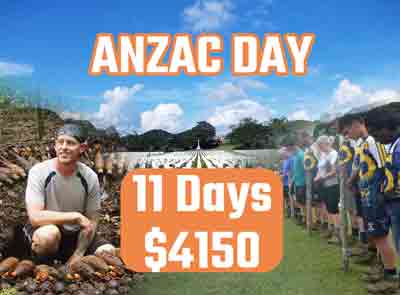Trekking Kokoda: The Australian Battle of Salamaua – A Pivotal Moment in the 1943 Campaign
Australia’s involvement in the Pacific during World War II brought forth significant battles that shaped the course of history. One such crucial engagement was the Battle of Salamaua, a pivotal moment in the broader Kokoda Campaign that unfolded in the rugged terrains of Papua New Guinea.
Prelude to the Salamaua Operation (March 1942 – March 1943)
As the Pacific War escalated, the strategic importance of Papua New Guinea became evident. In early 1942, the Japanese forces targeted key locations, setting the stage for intense conflict. The region around Salamaua witnessed early skirmishes, and by March 1943, the Allied forces were gearing up for a decisive offensive.
Allied Advances and Japanese Positions (January 1943 – July 1943)
The months leading up to the Battle of Salamaua saw a series of engagements, with Australian and United States forces gradually gaining ground. Japanese positions around Salamaua were well-fortified, necessitating a meticulous approach by the Allies. The area around Mubo and Nassau Bay became a focal point as the Allied forces aimed to weaken the enemy’s defensive positions.
Operation Postern and the Salamaua–Lae Campaign (July 1943 – August 1943)
In July 1943, the Allies initiated Operation Postern, a significant offensive targeting Salamaua and its vicinity. The campaign aimed to divert Japanese attention from Lae, a key strategic location. The Battle of the Bismarck Sea in March 1943 had already weakened Japanese naval capabilities, providing the Allies with a window of opportunity.
Capture of Salamaua and Defensive Actions (August 1943 – 11 September 1943)
The Salamaua operation unfolded with Allied forces landing at Nassau Bay in August 1943. The Australian 3rd Division, including the famed infantry battalion, played a crucial role in the assault. The battle around Salamaua intensified, with defensive positions around Mount Tambu and Lababia Ridge becoming critical points of contention.
On 11 September 1943, the Allied forces achieved a significant victory by capturing Salamaua. This success marked a turning point in the Kokoda Campaign, disrupting Japanese supply lines and consolidating Allied control over key territories.
Significance of the Battle of Salamaua in the Kokoda Campaign
The Battle of Salamaua had broader implications for the overall Kokoda Campaign. The capture of Salamaua allowed the Allies to develop it as a base for further operations. The Huon Gulf and the isthmus region now lay under Allied control, providing a strategic advantage in the Pacific theater.
Legacy and Recognition
The bravery and sacrifice of the Australian and American forces during the Battle of Salamaua are commemorated at the Australian War Memorial. Major General Stanley Savige, a key figure in the campaign, is remembered for his leadership during this critical phase of the war.
Conclusion
As trekkers embark on the challenging journey along the Kokoda Track, they traverse landscapes that once bore witness to the heroic struggles of soldiers in the Battle of Salamaua. The remnants of defensive positions, old Vickers, and the jungle itself echo the tales of courage and resilience that unfolded in the pursuit of victory. The events of September 11, 1943, forever link the rugged terrains of Salamaua to the broader narrative of the Kokoda Campaign, a chapter etched in the annals of Australian and world history.




